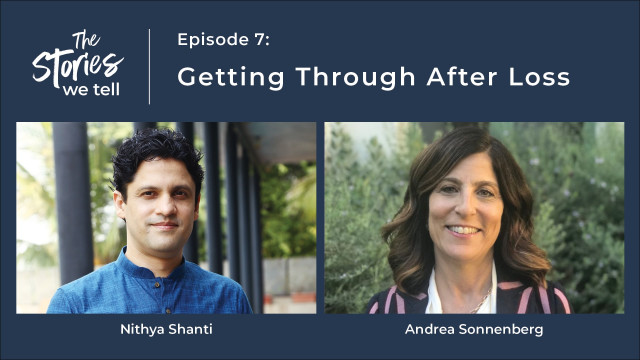How to Leave Your Comfort Zone

Humans are creatures of comfort. In fact, it’s estimated that at least 40 percent of what we do on a daily basis is out of habit.
Think about that — almost half of what you do each day requires no thought, because it is exactly what you did the day before with no new input from your conscious mind.
Sometimes we forget that we are not so different from animals, and in our reptilian brain — the same brain that lizards have — we’re preoccupied with getting our genes into the next generation. It’s all about survival. That’s why that feeling of safety is quite important for us humans, and why our subconscious mind resists anything that is presented as potentially painful or unpleasant. It’s our subconscious, everything under the hood, that prevents us from seeking out novel experiences due to fear of the unknown.
Think back to when you were a child and you started to learn how to ride a bicycle. You probably fell down quite a bit in the beginning. It might have felt impossible to do until it clicked and it became effortless. There is always some discomfort with trying something new, a period of time where we feel as if we’re up in the air and swimming with nothing to grasp onto. This feeling of discomfort is a sign that we are creating novel connections in our brain. Rewiring the brain creates discomfort, no matter how good it is for us.
I Love My Comfort Zone, So Why Push It?
When confronted with change, some people say things like, “I’m perfectly content doing things I’m comfortable with — what’s the point of getting outside my comfort zone?”
If you like staying in your comfort zone, ask yourself if you feel fully alive or if you sometimes feel bored and life seems dull? If the latter is true, then getting out of your comfort zone can bring back more excitement into your life.
If you truly feel happy, vibrant, and fully alive, that’s wonderful! The only thing I would consider is that it can be worth it to stretch outside of your comfort zone for your future wellbeing.
There are people who are really lucky — they grow up in harmonious families with parents who are loving. They’re good at school, financially secure, surrounded by friends, and all those other things that make us feel safe. The problem is that when you lead a fortunate life like this, then there’s a high chance that you’re probably not very resilient when the going gets tough and you are faced with a crisis, as resilience is built by overcoming small and big challenges. And sooner or later in a human life, we will have to face loss, aging, illness — all situations that will bring us out of our comfort zone. Of course, we can learn to adapt when those kinds of things happen, but by taking small steps to get out of our comfort zone when everything is good, we’ll learn the skills to adapt that we might really need to lean on later.
3 Ways to Stretch Your Comfort Zone
Given our innate tendency to be comfortable, if we want to change anything from what it is that we’re currently doing, it takes conscious effort. Here’s how to work with fear when you practice getting outside of your comfort zone:
1. Reframe your thoughts around the new activity.
Public speaking is one of people’s biggest fears, but whether you find it exhilarating or anxiety inducing all comes down to the quality of thoughts you have about it. Every time I have a public speaking engagement, I get a queasy feeling in my stomach right beforehand. For me, that’s just part of the process, but I would never describe it as anxiety. For someone else, those butterflies might be a negative thing. The physical feeling is the same, but the interpretation of that physical feeling is completely different. Try to change the way you think about nerves the next time you’re in a new situation.
One great way to get into a different relationship with your thoughts is through meditation. You learn that you are not your thoughts but the one who is aware of them — you’re really this spacious, vast awareness and you are already whole, irrespective of what fearful thoughts you have.
2. Have the fear and do it anyway.
This is an old-school saying and it comes off a little harsh, but think of it this way: You’re driving a car and the fear is in the backseat. That’s fine. It’s OK to have fear as long as it’s not the driver — and as long as you know that you are not your fear.
Back to the example of public speaking, I’ve never consciously found it frightening, but I can tell my body is scared until just before I start, and then it’s peaceful and flowing. Some of these physical reactions are even ancestral — in old times, speaking in front of people could have been a death sentence if they didn’t like what you were saying because you could be ostracized from your village. A lot of these things are so deeply embedded in our physiology and in our biology. That doesn’t mean we still need to be fearful today. Acknowledge that your body is reacting, but make the conscious effort to push past it.
3. Practice being present.
It’s so easy to get caught up in ruminating on the past or worrying about the future, but if you can be in the here and now, you can leave your comfort zone without so much discomfort — or maybe even actually enjoy it.
I moved to Shanghai in 2000, when I was in my early 20s. It was a bit like the Wild West over there at the time. I didn’t know the language or the culture. There were construction sites everywhere that you could fall into if you weren’t paying attention! I was forced for the first time to be 100 percent present and it was exhilarating, because you had to be alert — otherwise, something could easily happen to you.
It also reminds me of extreme sports people do, like jumping from skyscrapers. They thrive on that feeling of adrenaline, or what someone else might call the feeling of fear. But it’s all about how they perceive the situation. The athletes who can perform in these situations are extremely present so that they can both stay safe and soak in every moment.
What helped me and helps my clients to be more present in everyday life is meditation, as the process of meditation teaches us to remove our attention from our thoughts and back to the present moment, which also helps when rumination kicks in during daily life.
What’s one way you can step outside your comfort zone today?
Try this Roundglass Course, Living Fearlessly with Change and Uncertainty by mindfulness coach, Palma Michel, to learn how to engage with the fear of the unknown.
Header photo: janiecbros/E+/Getty Images







